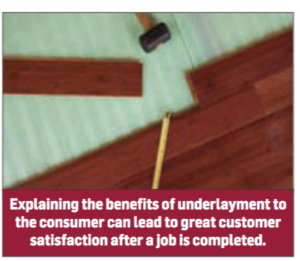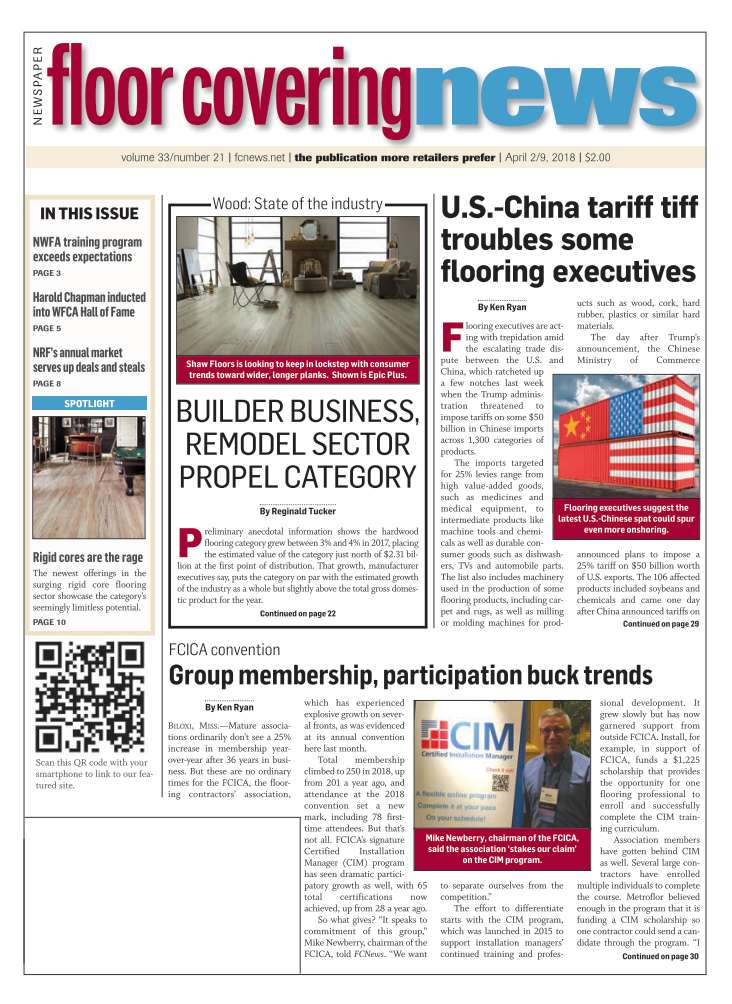April 2/9, 2018: Volume 33, Issue 21
By Lindsay Baillie
 Arming retail salespeople with the knowledge to prescribe and sell the right underlayment for the job is the key to success, suppliers say. Once a retail sales associate is properly trained on the latest products, he or she must make it a point to educate the consumer.
Arming retail salespeople with the knowledge to prescribe and sell the right underlayment for the job is the key to success, suppliers say. Once a retail sales associate is properly trained on the latest products, he or she must make it a point to educate the consumer.
Following are a few key points to remember when selling underlayments.
Look for trade-up opportunities. Underlayments offered on a good/better/best platform provide retailers with twice the opportunity to upsell—once, when the consumer decides whether to purchase underlayment along with her floor, and again when she has the option to choose between underlayments of different qualities.
As Jeff Bonkiewicz, channel manager, Laticrete, explained, “Underlayment products are valuable accessories that help increase margins and generate higher ticket sales for retailers. Upselling from an entry-level product to a specialty underlayment is achievable through comprehensive product education. This focus on education starts with the dealer outlining the benefits of using an underlayment before installing materials.”
Focus on the benefits, not features. Once a consumer learns about the characteristics of underlayment, the product will no longer seem like an accessory but rather a necessity. As most underlayment suppliers point out, qualities such as sound absorption and comfort sound great to a consumer who is looking to install new flooring.
“Sound absorption is extremely important in multi-story, single-family homes, condos, apartments and multi-story office and hotel buildings,” explained Jim Wink, vice president of sales and marketing, Foam Products. “In terms of comfort for hard surface flooring, a high-quality foam underlayment can soften the feel of walking on the floor, especially with thinner laminates and vinyl plank flooring.”
Underlayments complete the installation. When a consumer enters a store looking for flooring, she is typically only interested in the style and color of her new floors. Suppliers believe it is crucial for the retailer to slow her down and force her to think through the function of her entire application, including hidden problems that can occur within the life of the flooring materials.
“For example, when it comes to floating floors, most consumers and contractors know they need an underlayment,” said Deanna Summers, marketing coordinator, MP Global. “Problem solved, right? The trick is to understand the full installation and match the right performing underlayment that will be best suited for the entire makeup of the floor, not just the floor covering materials.”
In addition to its other characteristics, underlayments also reduce the amount of floor preparation required for a successful installation. As Wade Verble, vice president of underlayment, DriTac, noted, “The associated labor savings will typically offset the cost of the underlayment and labor needed to install the pad.”
Padding extends the life of the floor. Since underlayment can protect installations in various ways—such as limiting water intrusion, damages and cracking as well as aiding in sound reduction—this accessory helps to present a better overall surface to adhere finished flooring. “Adding an appropriate underlayment could mean the difference between a three- to five-year installation and a durable lifetime installation,” Laticrete’s Bonkiewicz said.
Providing consumers with the proper underlayment can also create consumer trust. As DriTac’s Verble explains, “Peak performance for any flooring system is always optimal and underlayment is critical to achieving the highest level of results and customer satisfaction.”

